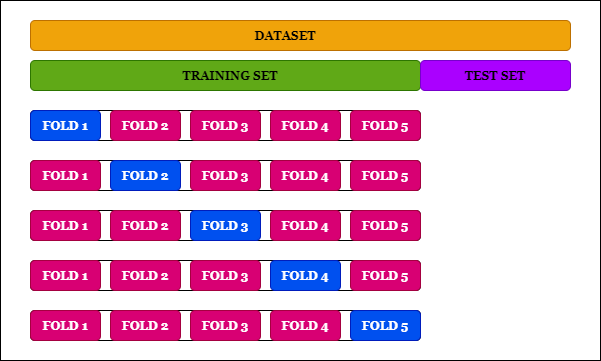In my sentiment analysis work ı have used k fold cross validation, and ı got below results
precision recall f1-score support
0 0.906 0.916 0.911 878
1 0.865 0.845 0.855 1142
2 0.849 0.864 0.857 950
accuracy 0.872 2970
macro avg 0.873 0.875 0.874 2970 weighted avg 0.872 0.872 0.872 2970
val-accuracy for each fold [0.7805452709525412, 0.8114478114478114, 0.8454545454545455, 0.8494949494949495, 0.8720538720538721]
average val-accuracy 0.8317992898807439
I wonder that what is my model accuracy, ı got 87 for last fold but ı got only about 70s when ı tested my model with unseen data. I think when we test with unseen ı am getting results like first fold. For kfold cross validation after first fold the model knows every data, because of that reason at second or third... fold we got more accuracy,am ı true? ıf ı am true kfold doesnt increse accuracy

